What Is Online Marketing?
Online marketing is the practice of using the internet to promote your products, services, or brand to potential customers. It involves creating and distributing content digitally that attracts, engages, and converts.
Online marketing, also known as digital or internet marketing, differs from traditional marketing in that it helps you reach a global audience, measure results in real time, and adapt quickly.
And allows for more control over budget, targeting, and personalized messaging.
Online marketing is a combination of strategies and tactics such as search engine optimization (SEO), pay-per-click (PPC) advertising, email, video, social media, and more.
Benefits of Online Marketing
Here are some of the main benefits of online marketing:
- Cost-effective: It’s generally much cheaper than traditional marketing methods, such as TV, radio, or print ads. You can create and distribute content for free or at a low cost. And measure results with free tools like Google Analytics.
- Targeted: It allows you to target your audience based on their demographics, interests, behaviors, and location. You can also segment your audience and personalize messages for each segment. To boost conversion rates and loyalty.
- Flexible: Online marketing offers the flexibility to adapt your strategy and tactics based on your goals, budget, and feedback. A/B test different ideas, experiment with new channels, and optimize campaigns in real time.
- Scalable: It enables you to reach a large, global audience with minimal resources. Leverage social media, email, and search engines to amplify your message and generate more leads and sales.
- Trackable: It allows you to track and measure performance with data and insights. Know how many people visit your website, how they interact with your content, and how they convert. Use this information to improve your online marketing strategy and return on investment (ROI).
Types of Online Marketing
Search Engine Optimization
Search engine optimization (SEO) is a set of processes intended to improve your website’s visibility in search engines like Google.
It involves optimizing your site’s content, structure, and user experience.
Every day, users conduct billions of searches for products, services and information. A strong SEO strategy can improve where your site appears in the SERPs.
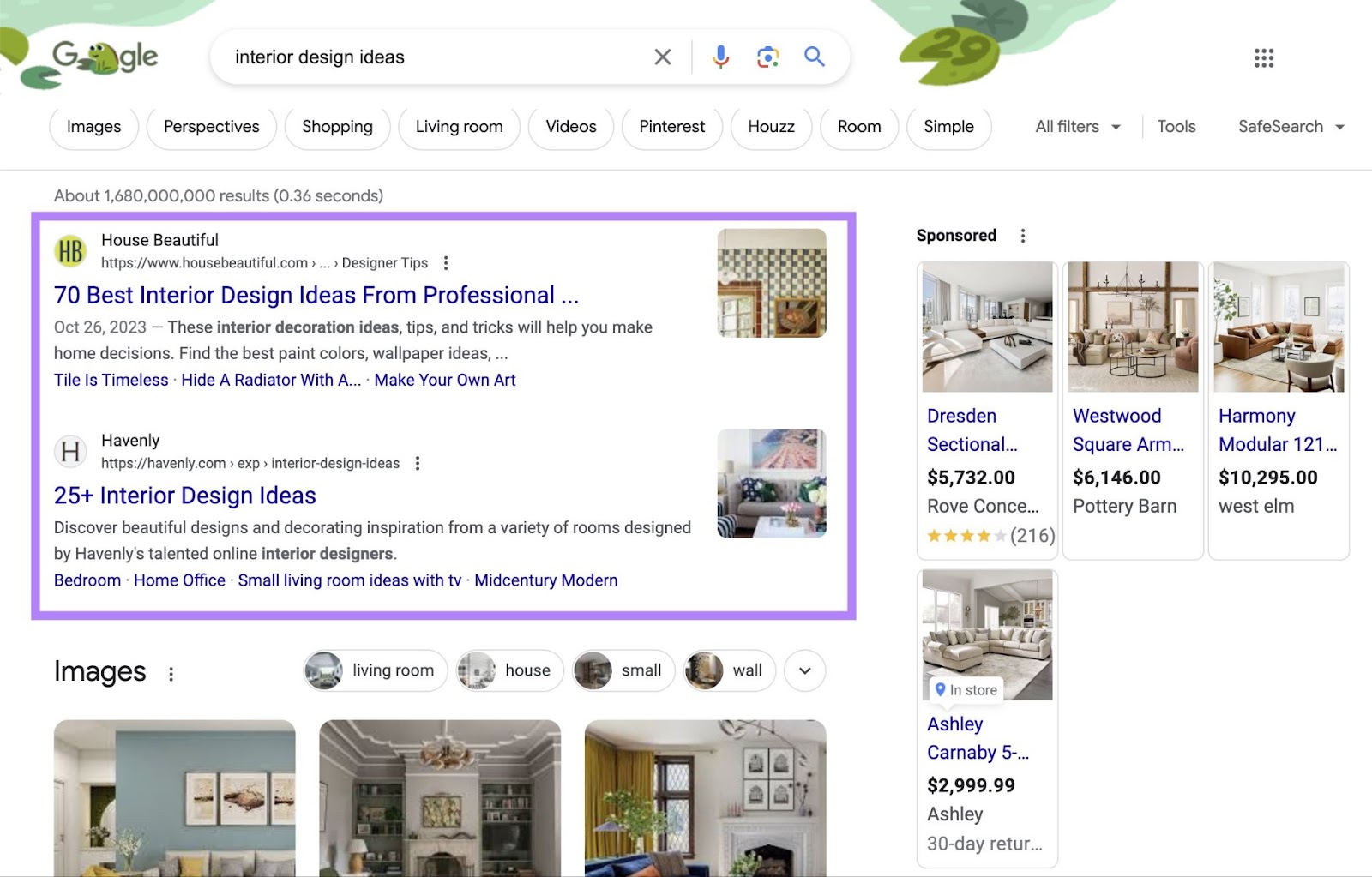
The better you rank, the more traffic you can drive. And more traffic can mean more customers and brand awareness.
Further reading: What Is SEO? Meaning, Examples & How to Optimize Your Site
Social Media
Social media marketing leverages platforms like Facebook, X (formerly Twitter), Instagram, or LinkedIn to connect with your audience, share your content, and build a community.
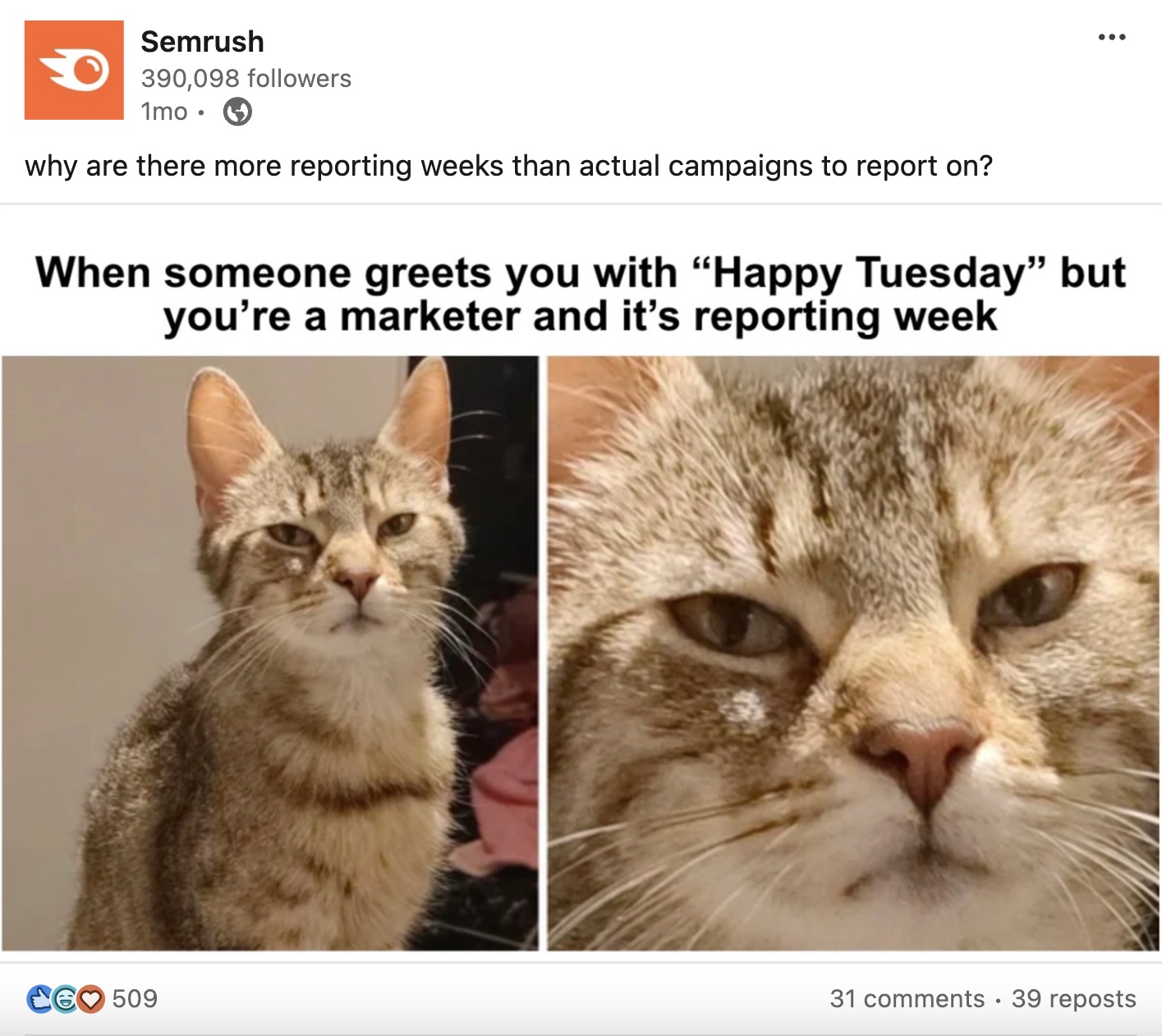
Use social media to increase your brand recognition, engage with followers, boost traffic, drive sales, and more.
Social media also serves in monitoring your online reputation, gathering feedback, and providing customer service.
Further reading: Top Social Media Platforms Worldwide
Content Marketing
Content marketing involves creating and sharing valuable, relevant, and useful content to attract and retain your target audience.
It can include blog posts, ebooks, videos, podcasts, infographics, or webinars.
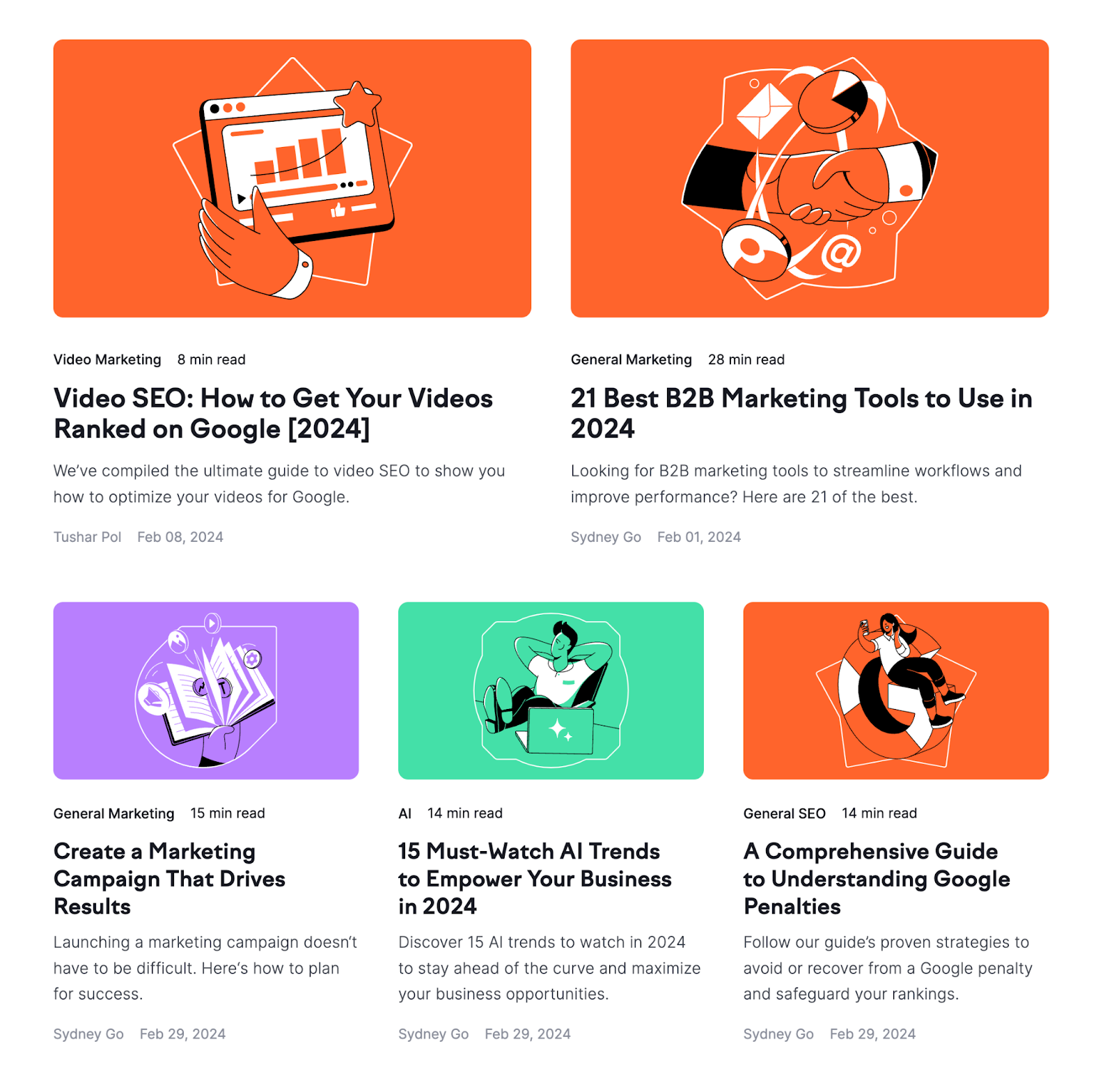
Instead of directly promoting products, content marketing focuses on building a relationship with your audience. By providing them with valuable content. And earning their trust.
When they’re ready to purchase, your brand will be top of mind.
Further reading: What Is Content Marketing? Definition, Importance, & Strategy Tips
Pay-Per-Click Advertising
Pay-per-click (PPC) is a type of online advertising where you pay every time someone clicks on your ad. PPC ads can appear on search engines, social media, websites, or apps.
Like this:
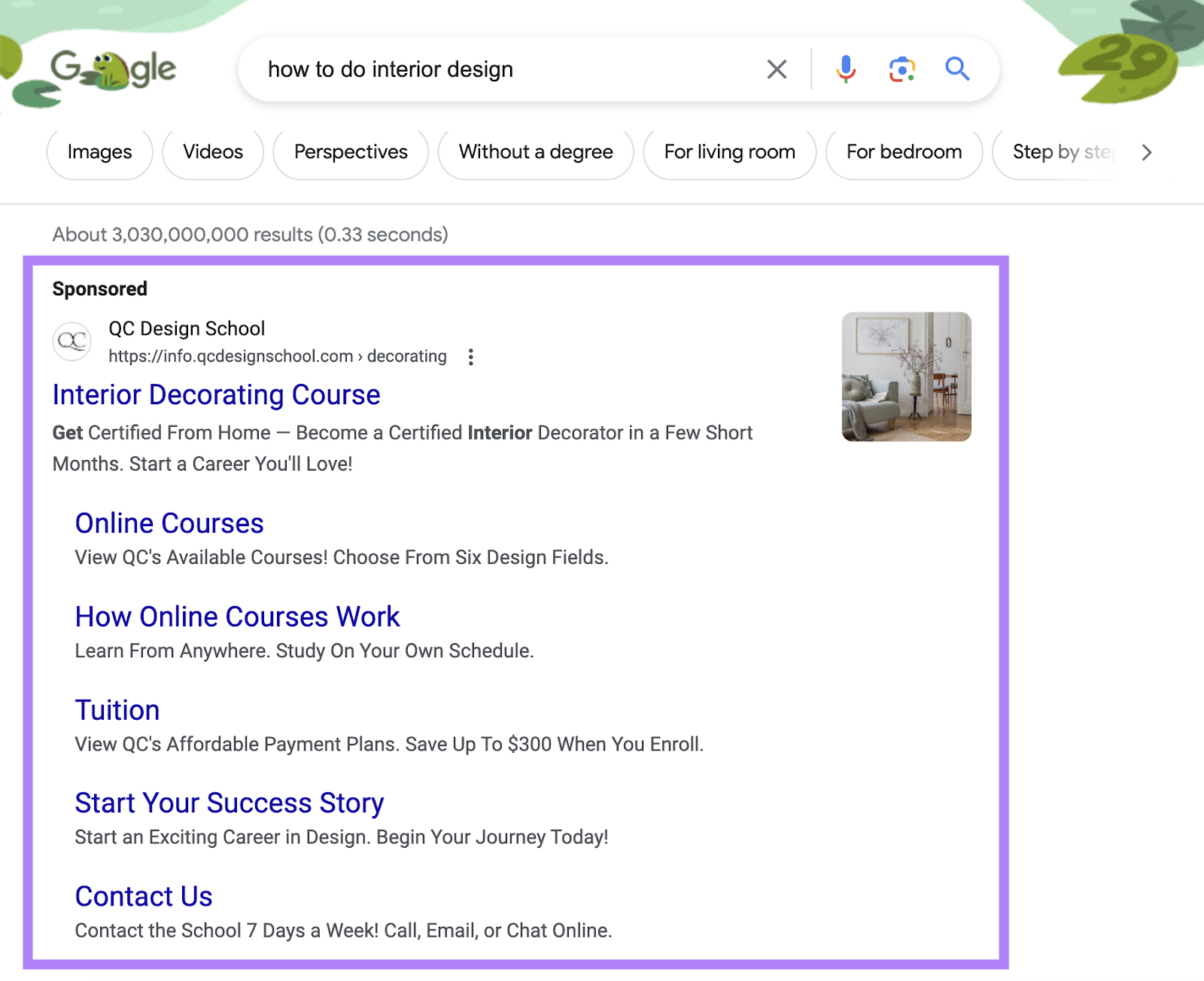
PPC allows you to bid on keywords that are relevant to your business. And target ads to specific locations, devices, and demographics.
So you can reach a large and targeted audience, control your budget, and easily measure results.
Unlike organic SEO, which grows visibility over time, PPC offers more immediate results.
It can help you quickly boost brand awareness, attract more visitors, and drive more conversions.
Further reading: What Is PPC? The Definitive Guide to Pay-Per-Click Marketing
Influencer Marketing
This type of marketing involves collaborating with influencers in your niche to promote your products, services, or brand.
Influencers can be bloggers, vloggers, celebrities, or experts who have a large and loyal following.
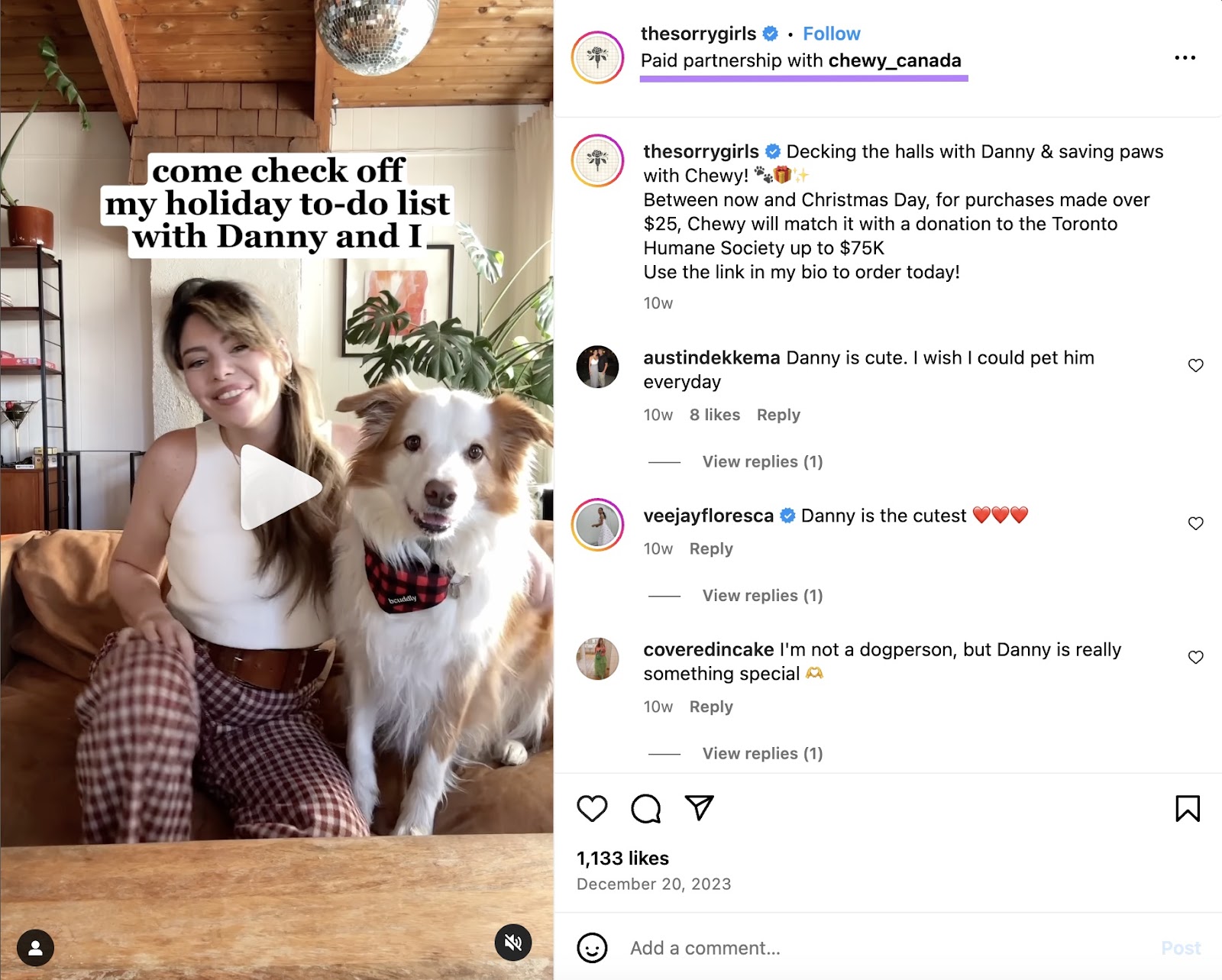
Leveraging influencers is smart because they’ve already earned their followers' trust.
When they promote another brand, their followers see it as genuine and trustworthy.
Which makes it a great tactic for boosting brand awareness and driving engagement.
Further reading: Influencer Marketing: What Is It and How to Build a Solid Strategy
Affiliate Marketing
Affiliate marketing is a tactic in which a brand pays a commission to another brand or individual for promoting its products or services.
Unlike influencer marketing, which uses someone's popularity and audience trust to influence purchases, affiliate marketing focuses exclusively on driving conversions.
If you run an affiliate program, you provide affiliates with a unique tracking link and pay a commission for each purchase made by their referrals.
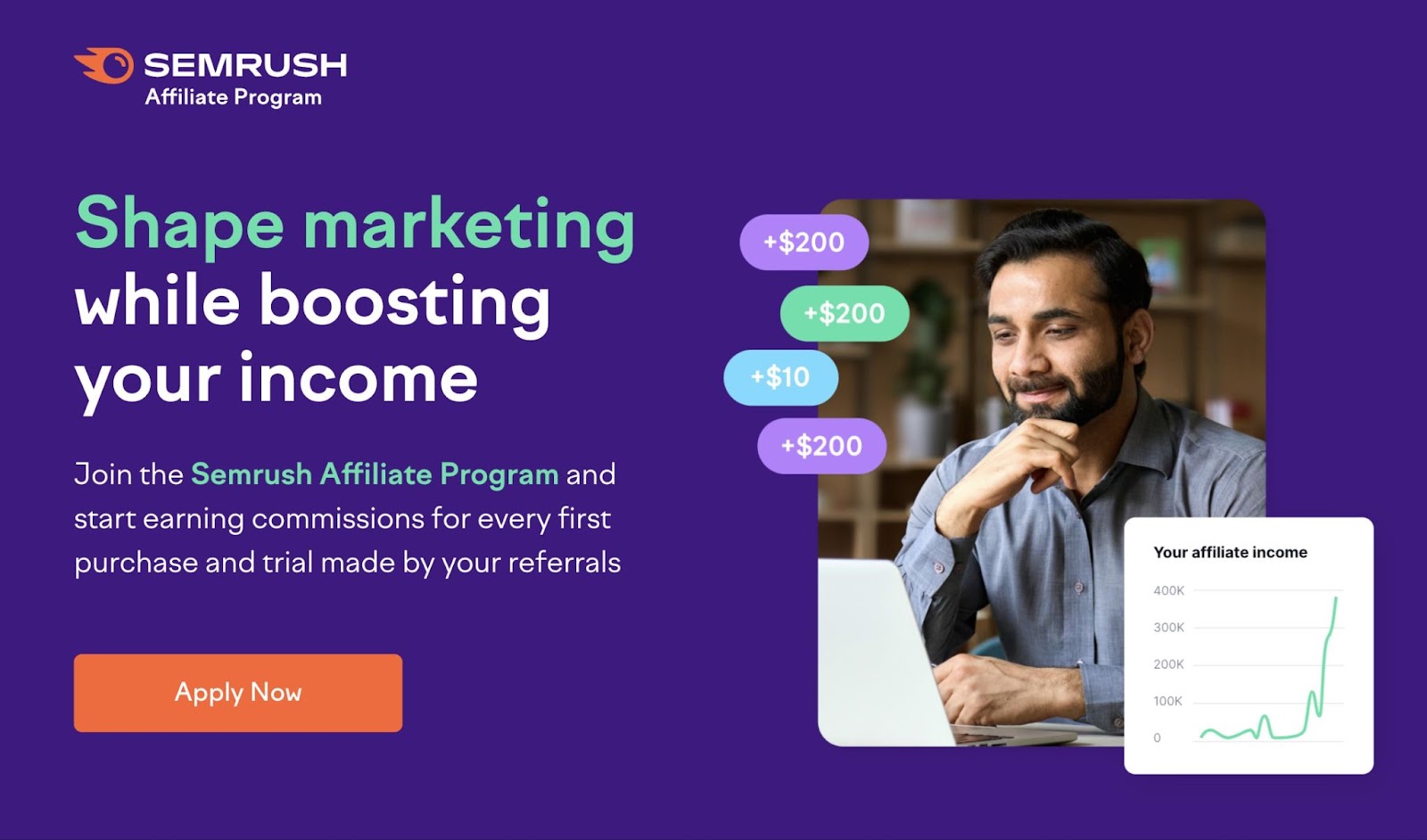
Affiliate marketing extends your reach beyond your immediate network, using affiliates as external salespeople.
It’s a win-win relationship.
Affiliates make money. And you sell more with less advertising expense.
Further reading: What Is Affiliate Marketing: How to Start in 4 Easy Steps
Email Marketing
Email marketing involves sending emails to subscribers or customers to share information, build relationships, and encourage them to take action.
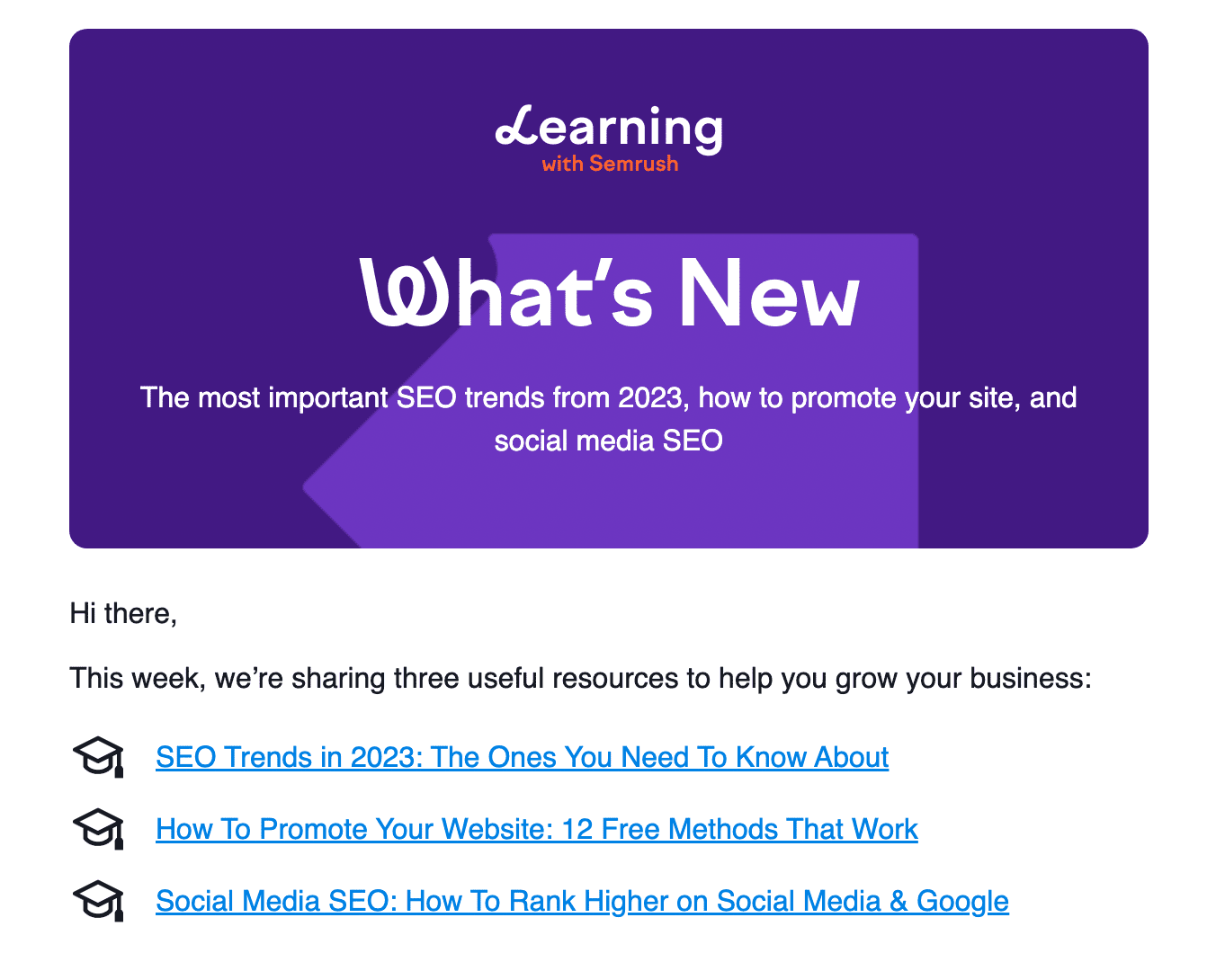
Email marketing can help you connect with customers on a personal level.
Segment your audience based on their interests and demographics. To send tailored, relevant, and engaging messages.
Further reading: What Is Email Marketing? The Definitive Guide for Beginners
Examples of Online Marketing
HomeToGo frequently uses PPC to target people searching for accommodation options in different locations.
Each ad is optimized for specific keywords to drive traffic to its listings.

BuzzFeed, known for its engaging content, uses email marketing to segment its audience and send personalized content recommendations. And drive traffic back to its website.
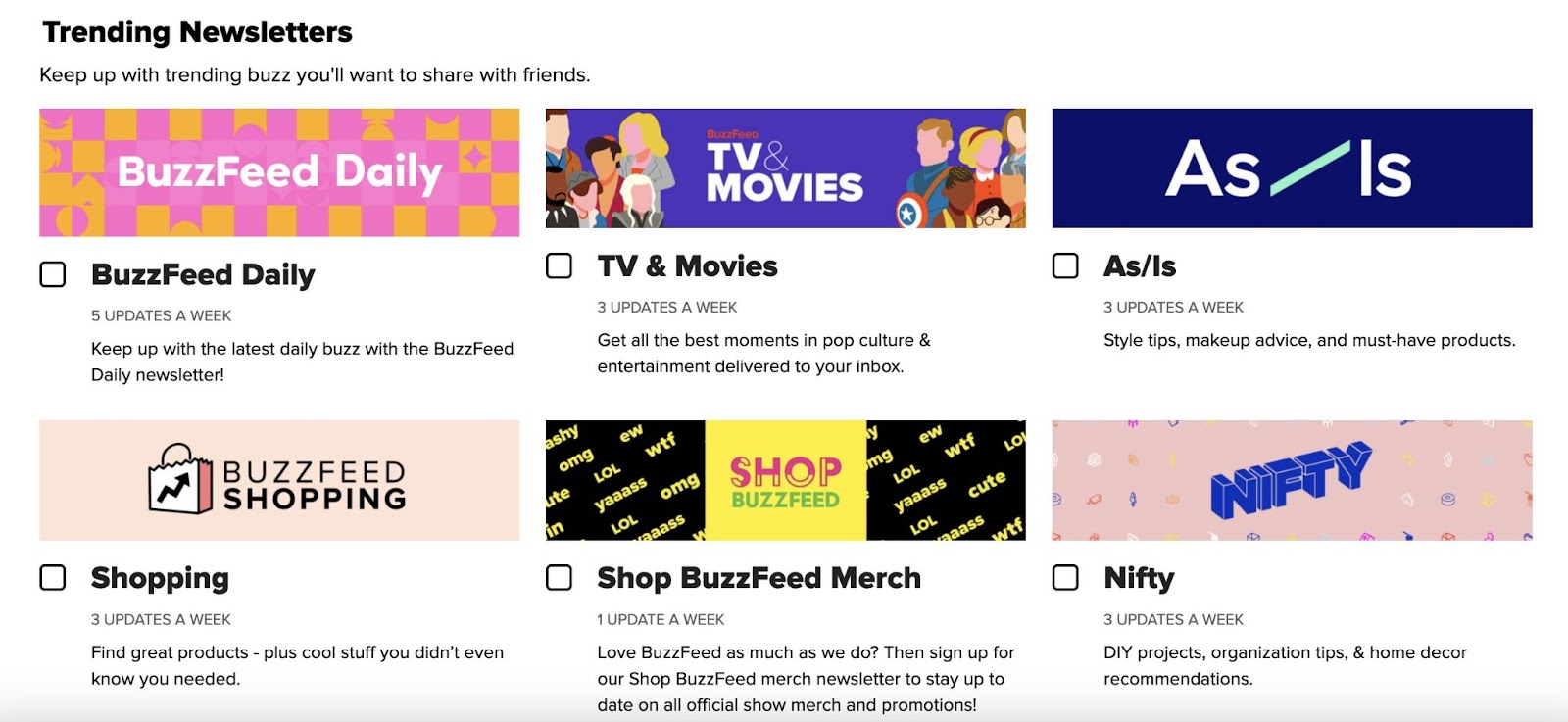
Starbucks uses social media marketing to engage with customers, promote the brand, and launch interactive campaigns.
A great example is the #RedCupContest on Instagram, which encourages users to post creative photos of their red holiday Starbucks cups.
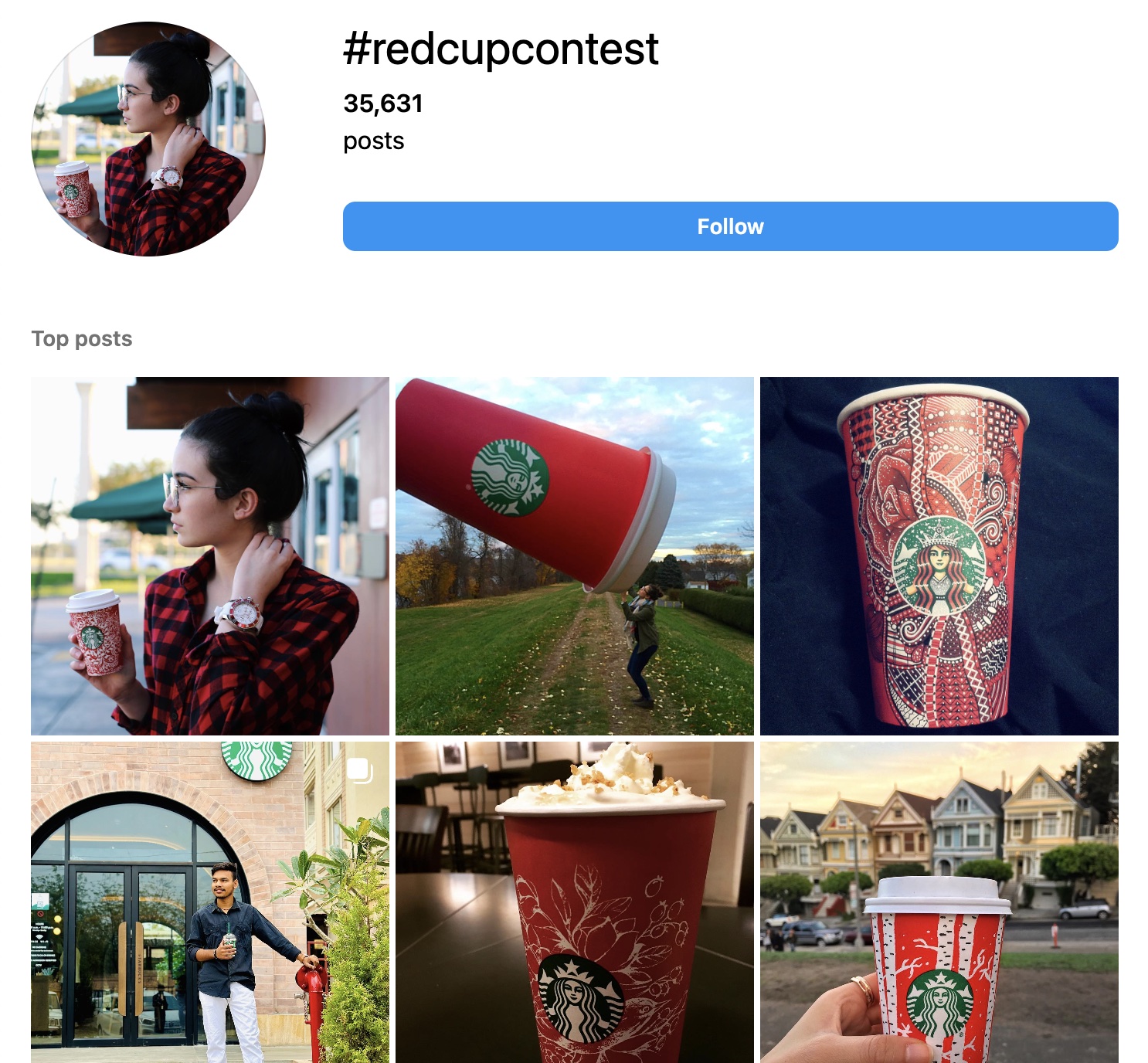
Amazon allows website owners and bloggers to earn commissions by referring customers to its site.
It’s one of the largest and most successful affiliate marketing programs.
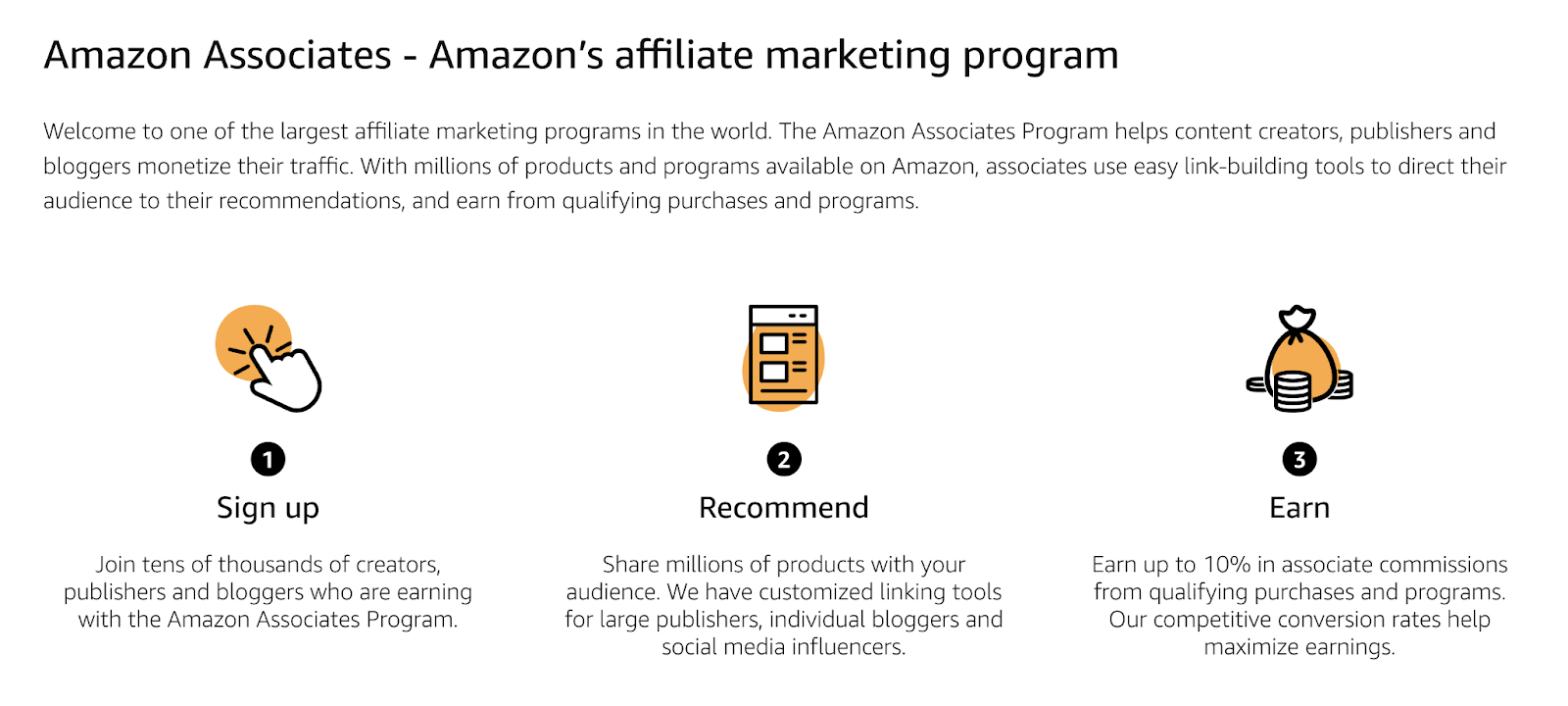
Glossier, a beauty brand that relies heavily on influencer marketing, partners with influencers of all sizes across social media. To reach potential customers through trusted voices in the beauty community.

How to Start in Online Marketing
Here are seven steps to get started with online marketing.
1. Define Your Target Audience
These are the people most likely to be interested in your products, services, or brand.
First, conduct market research. This helps you learn about your current and potential customers.
Gather data through methods like surveys, social media insights, feedback forms, and research tools.
Use Market Explorer to gather information about your industry.
Select a location, choose your business category, and click “Research a market.”

Then, head to the “Audience” tab.
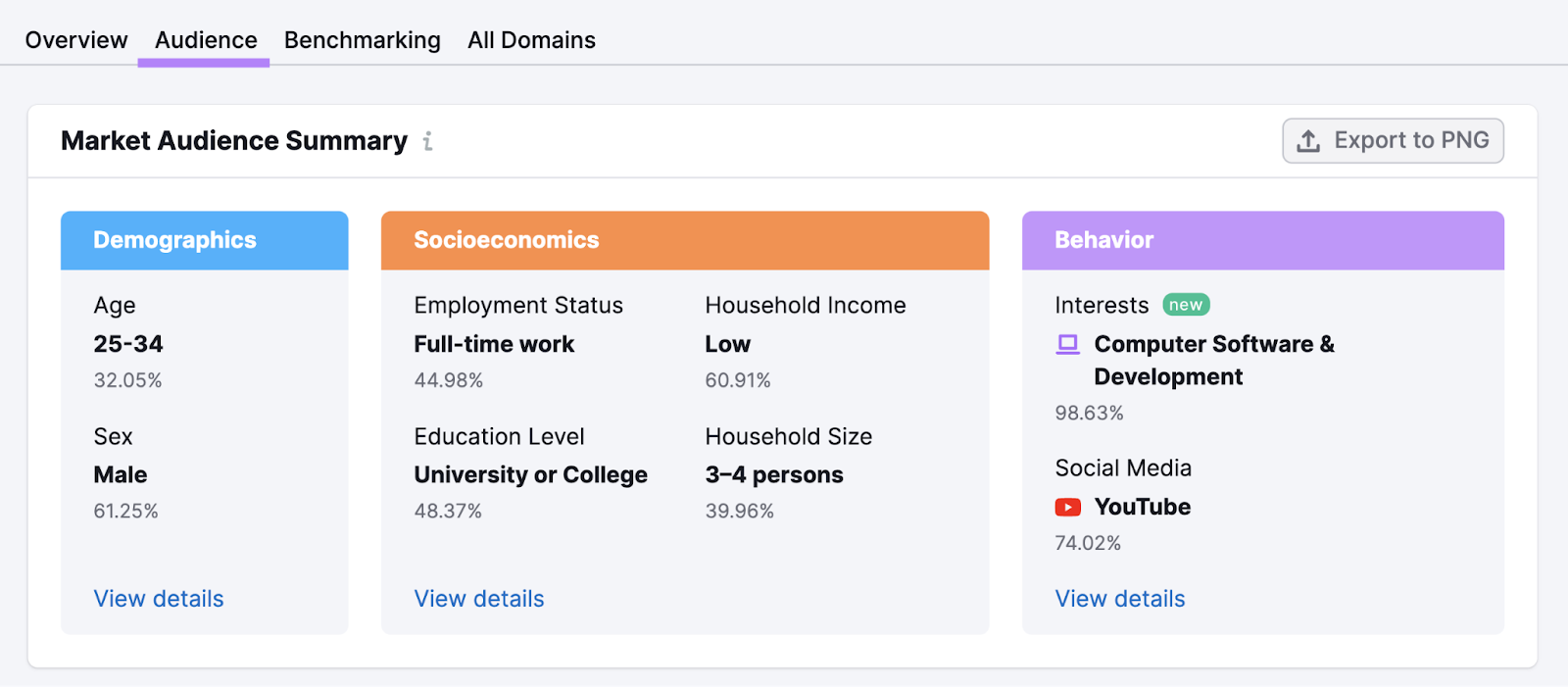
Look at demographics, socioeconomics, and behavioral characteristics.
This information is crucial to tailor your marketing strategy to your audience's habits.
Analyze your competitors to help understand your market’s audience. And how they engage online.
Enter up to five competitor domains into One2Target, select a location, and click “Analyze.”
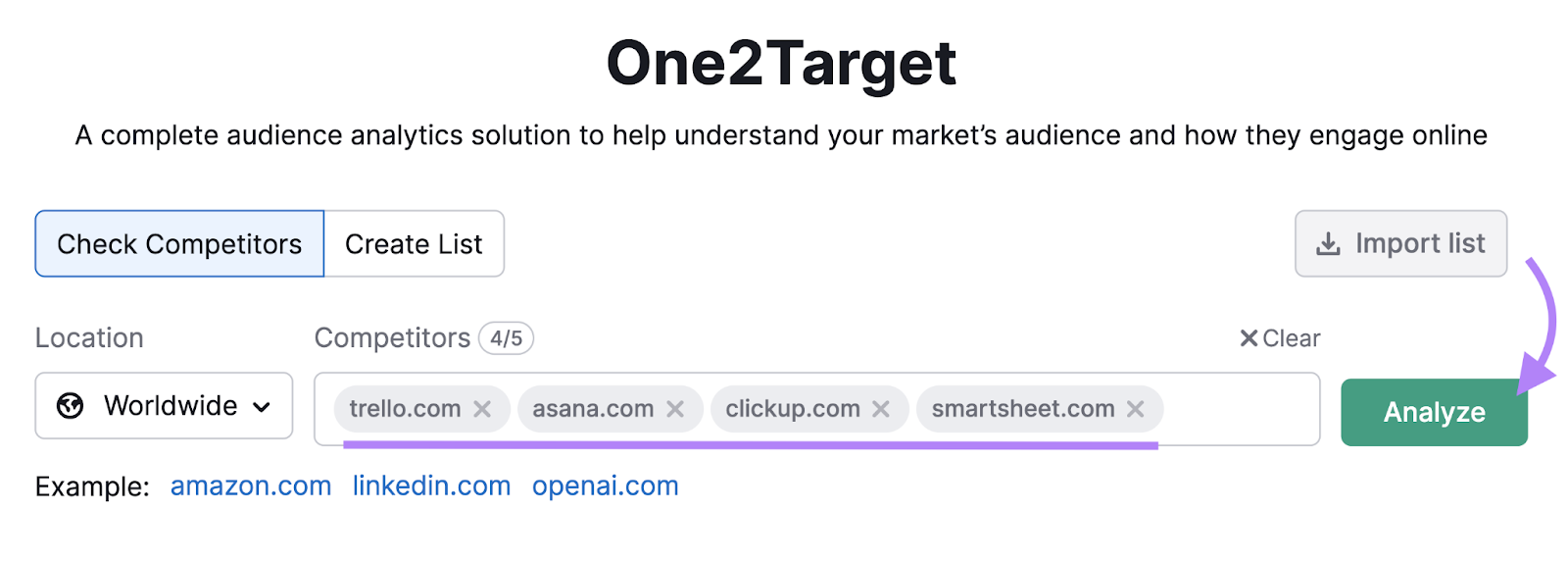
You’ll see detailed information about their audience’s demographics, socioeconomics, and online behavior.
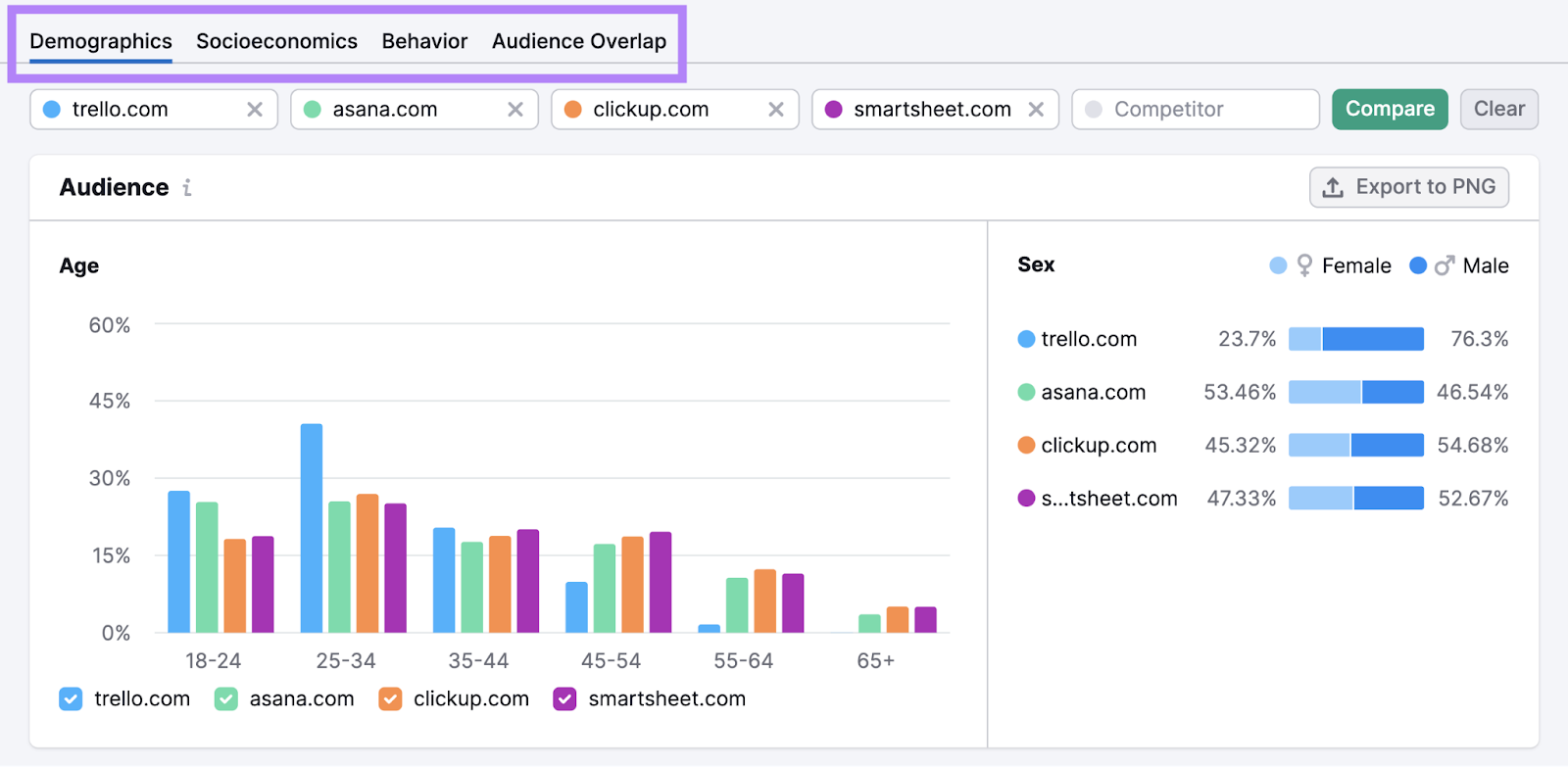
Further reading: Target Audience: What It Is & How to Find Yours [+ Examples]
2. Set Clear Goals
Your goals should be SMART: Specific, Measurable, Achievable, Relevant, and Time-bound.
Some examples of online marketing goals can be:
- Increase website traffic by 50% in six months
- Generate 100 leads per month from email marketing
- Boost sales by 20% in the next quarter
- Grow social media followers by 10,000 in three months
These goals are specific, measurable, and have a clear deadline.
By setting SMART goals, you can focus your efforts and track your progress and results.
3. Choose Appropriate Channels & Platforms
Your ideal channels and platforms depend on your goals and where your ideal customers spend time.
For example, if you're trying to reach a younger crowd, Instagram or TikTok might work best. But LinkedIn could be better for a mid-career professional audience.
If one of your goals is to increase organic traffic to your blog, you’ll likely need to invest in SEO.
There are many options to choose from. Such as:
- SEO
- Social media
- Content marketing
- PPC
- Influencer marketing
- Affiliate marketing
- Email marketing
- Public relations (PR)
Among others.
You don’t have to use all of these channels and platforms—especially in the early stages. Choose the ones that suit your budget, resources, and objectives.
Further reading: Effective Digital Marketing Channels & How to Use Them
4. Develop a Content Strategy
Content is the core of online marketing. It attracts, engages, and converts audiences.
Create and distribute content that is relevant and helpful. And that matches your audience’s needs, wants, and expectations.
Determine the main themes and topics that interest your audience using our Topic Research tool.
Enter a broad theme and the tool will generate tons of ideas for engaging content.
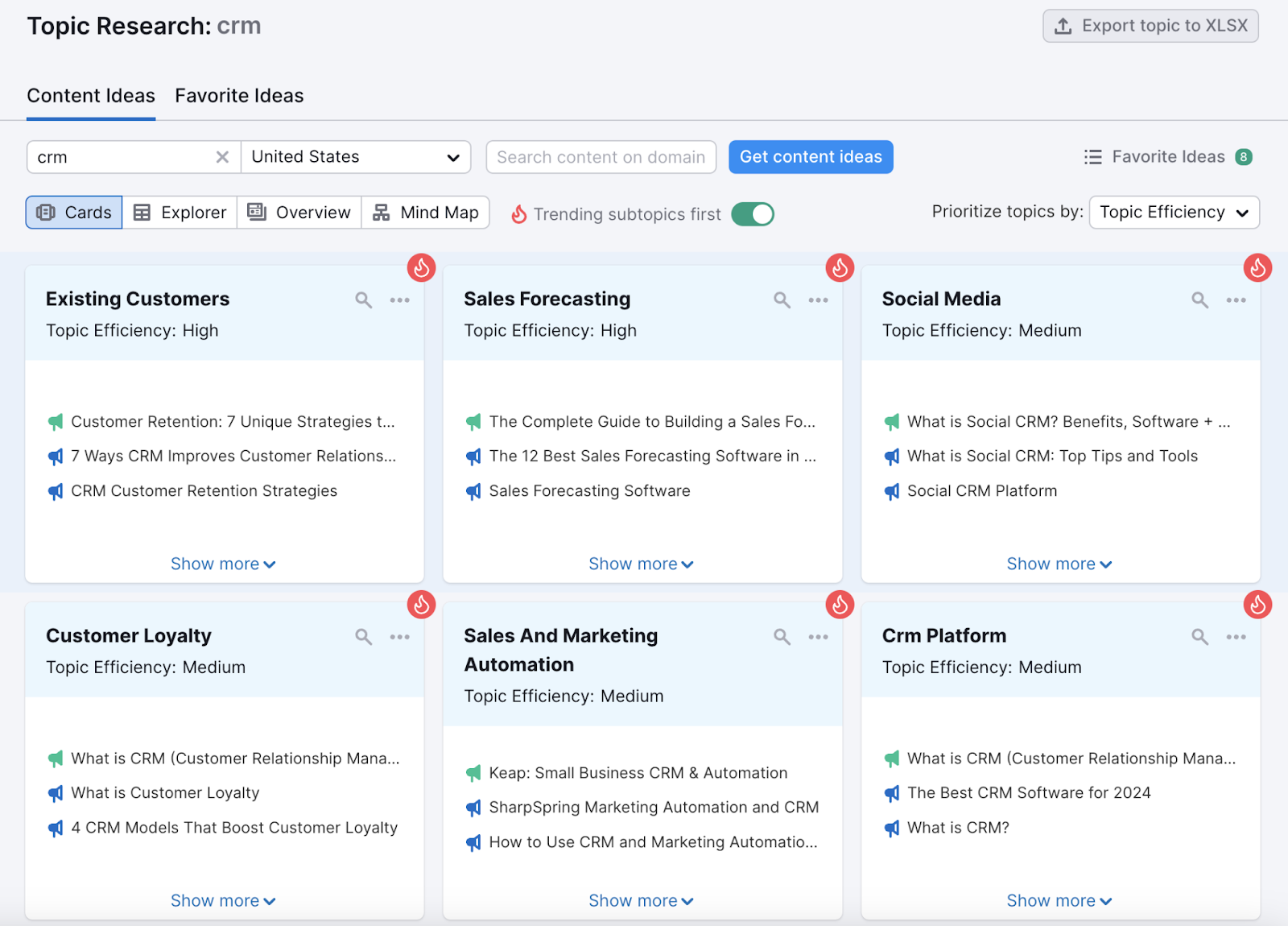
Create multiple types of content: blog posts, videos, infographics, and podcasts.
To cater to various learning styles and attract users at different stages of the marketing funnel.

Then, construct a content calendar. To help you determine when to create content, and where and how to distribute it.
Like this:

Finally, compare your content strategy against your goals. Tweak and adjust as needed. So your content stays fresh, valuable, and useful.
Further reading:
- The Ultimate Guide to Content Marketing Strategy
- Content Strategy Template [Free Download + Instructions]
5. Create Engaging Content
Your content should be:
- Valuable: Provide useful information, solutions, or entertainment to your audience
- Relevant: Meet your audience’s needs, goals, and interests
- Consistent: Align with your brand identity, tone, and style
- Actionable: Include clear and compelling calls to action to guide your audience to the next step of the marketing funnel
- Direct: Avoid fluff, filler, or truisms. Get to the point quickly.
- Engaging: Use storytelling, humor, visuals, or interactive elements to capture and hold your audience’s attention
To ensure your content is high quality, run it through the SEO Writing Assistant.
The tool provides suggestions to help you improve your content’s readability, tone of voice, originality, and SEO optimization.
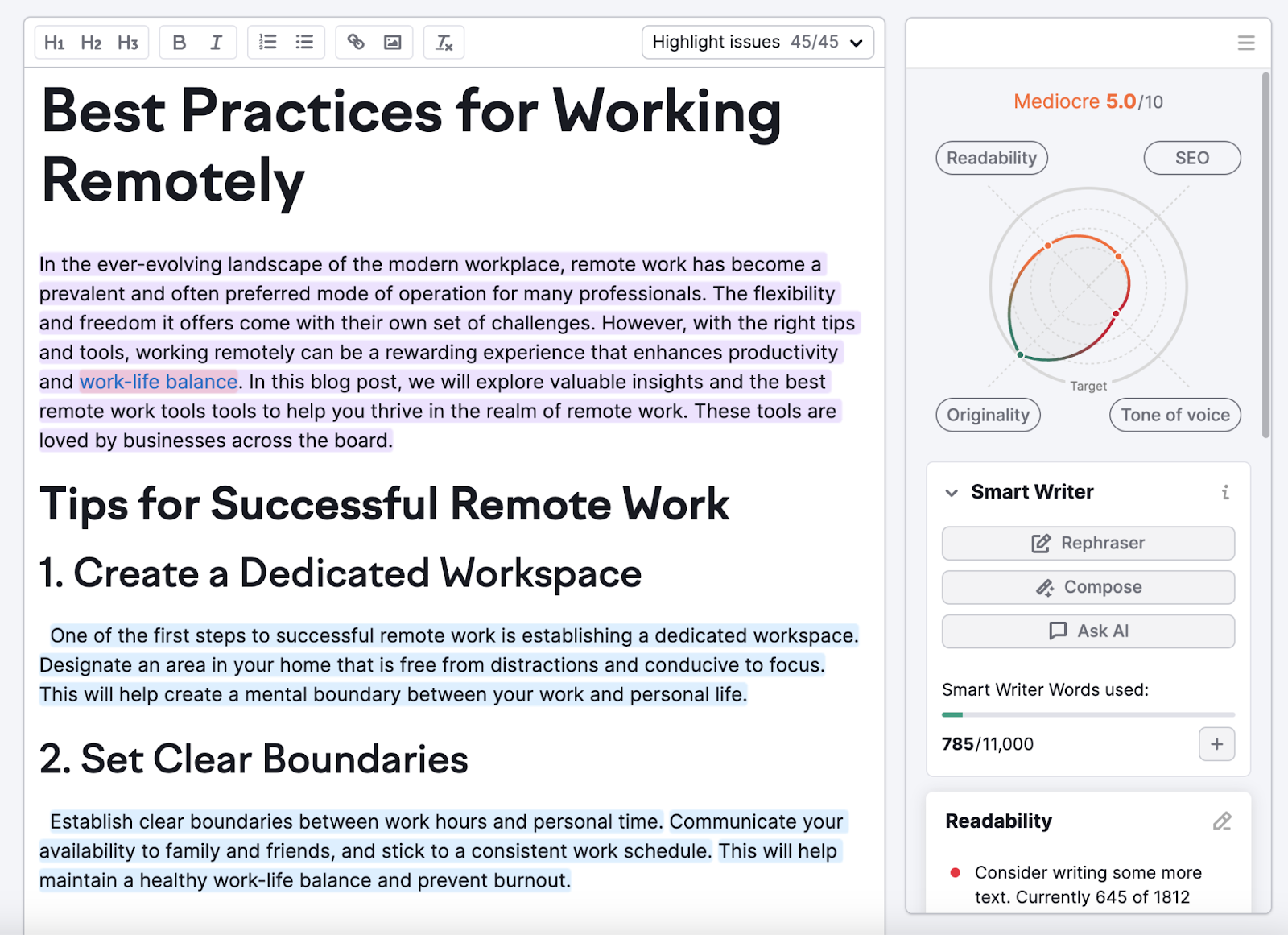
Further reading: What Is Quality Content & How to Create It
6. Measure & Analyze Results
Online marketing is not a one-time activity. It’s an ongoing process that requires consistent monitoring and evaluation.
Use tools like Google Analytics, Google Search Console, and Semrush to collect and analyze data.
These tools gather information regarding how many people you reach, how they engage, and if they buy or sign up.
Establish key performance indicators (KPIs), like how many users visit your site, how many leads you generate, or how many sales you convert.
Focus on metrics that match what you’re trying to achieve. Look for patterns to see which strategies work best.
Monitor and adjust your KPIs quarterly to ensure they still match your business objectives and goals.
Further reading: Marketing KPIs You Need to Monitor
7. Refine & Iterate
Optimize your online internet marketing based on results and feedback.
You need to:
- Identify what works and what doesn’t
- Test variations of your content, ads, or landing pages to see which ones perform better
- Implement changes and updates
- Repeat the process
Online marketing changes all the time. Be flexible, stay informed, and modify your strategies to sustain success.
Diversify Your Online Marketing Efforts
Focusing all your marketing on one platform is a gamble.
It's like placing all your bets on one number.
Diversify your efforts. Use a mix of different channels and platforms to reach and engage your audience, and achieve your goals.
Don’t be afraid to try new things. Learn from your mistakes.
And stay ahead of your competition by leveraging Semrush’s full suite of online marketing tools.
